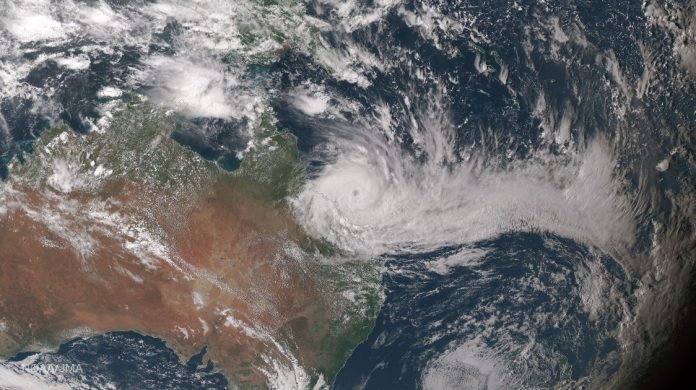
The worst cyclone in six years is set to smash into the coast of Queensland on Tuesday morning, forcing thousands of Australians to evacuate or seek emergency shelter and prompting some of the world’s biggest miners to halt coal operations.
Cyclone Debbie’s sustained winds reached 175 kilometers (109 miles) per hour with gusts up to 250 kph at its “very destructive core,” according to the Bureau of Meteorology. Police warned that 25,000 residents need to evacuate the city of Mackay due to an expected storm surge.
“This is going to be a severe cyclone,” Queensland Premier Annastacia Palaszczuk told reporters Monday. “It is increasing in intensity.”
Debbie is expected to cross land as a category four cyclone, carrying the risk of significant structural damage and dangerous airborne debris, according to the weather bureau. It will be the first in two years to reach the coast of the northeastern state and could be worse than Cyclone Yasi in some areas. Yasi was category five — the most severe — and badly damaged sugar- and banana-producing regions and affected tourist sites on the Great Barrier Reef.
In U.S. terms, Debbie would be the equivalent of a Category 3 hurricane — when it’s expected to hit land at about 4 pm New York time — on the five-step Saffir-Simpson scale, said Jeff Masters, co-founder of Weather Underground in Ann Arbor, Michigan. He said the cyclone has begun to interact with land and has probably reached its peak.
“It will quickly unravel,” Masters said. “In 24 hours it should be a tropical depression.”
The two countries use different methods to measure windspeed and have their own categorical designations. According to the methods used by the U.S., Debbie’s winds would be about 115 miles per hour.
Australia’s military is moving into position to help authorities respond to the cyclone, Prime Minister Malcolm Turnbull said Monday.
BHP Billiton, the world’s biggest miner, said it was suspending operations at the South Walker Creek metallurgical coal mine. Glencore is preparing to temporarily halt output from the Collinsville and Newlands mines. Evolution Mining Ltd., Australia’s second-largest gold producer, evacuated its Mt Carlton mine, according to a filing Monday.
The cyclone’s footprint covers the Burdekin, Proserpine and Mackay sugar-cane growing regions, which account for about half of Queensland’s crop, the industry group Canegrowers said in a statement. It’s too early to say whether the winds would affect the current forecast for a crop of 37 million tons of sugar cane in the harvest that starts in eight to nine weeks, Paul Schembri, the group’s chairman, said in an interview.
“It’s bound to generate some crop losses but at this point in time we can’t speculate what the extent of those losses will be,” Schembri said. “Damage now is just going to be another body blow to farmers at this time of the year.”
Aurizon Holdings Ltd., Australia’s largest freight rail operator, has stopped delivering coal to the export ports of Abbot Point, Dalrymple Bay and Hay Point, the company said Sunday.
The Port of Townsville, which handles approximately A$30 million ($23 million) in trade per day, evacuated vessels and personnel Monday. It took about 40 hours before the first ship was allowed back into port after Cyclone Yasi passed in 2011, Corporate Affairs Manager Sharon Hoops said by phone.
Resolute Mining Ltd. said Monday it had suspended operations and sent home staff at the Ravenswood gold mine, about 100 kilometers inland from Cape Upstart.
(c) 2017, Bloomberg · David Stringer, Matthew Burgess

